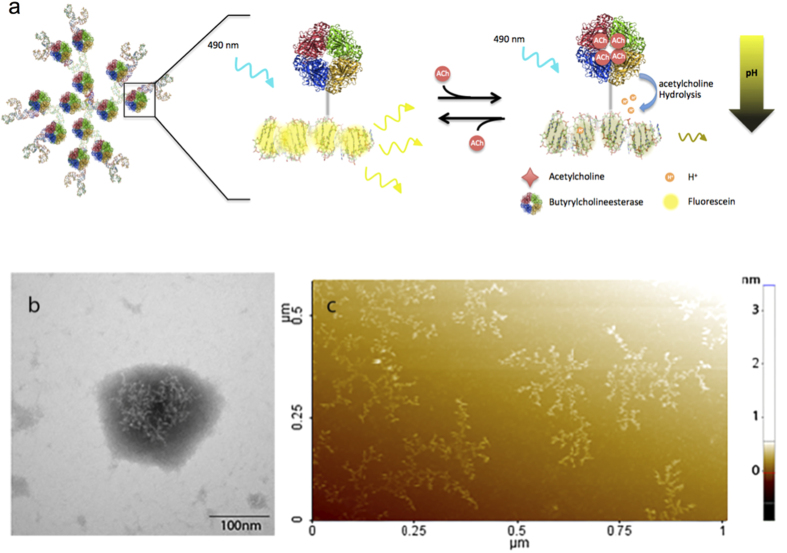Figure 1.
(a) A computationally rendered representation of the nanosensor and schematic of the proposed mechanism of DNA dendrimer-based nanosensors. The nanosensor design consists of 81 fluorescein molecules tethered in close proximity to 12 butyrylcholinesterase molecules using a DNA dendrimer calculated to be approximately 100 nm in diameter. The DNA nanosensor is highly fluorescent in the absence of acetylcholine when excited at 490 nm. In the presence of acetylcholine, the butyrylcholinesterase hydrolyzes acetylcholine, reducing the local pH and causing a decrease in the fluorescence of fluorescein. Structural characterization of the DNA dendrimer was performed using (b) TEM images of the structure, indicating diameters of 130 ± 24 nm, and with (c) AFM analysis of pre-assembled DNA dendrimer structures deposited on a mica surface.

